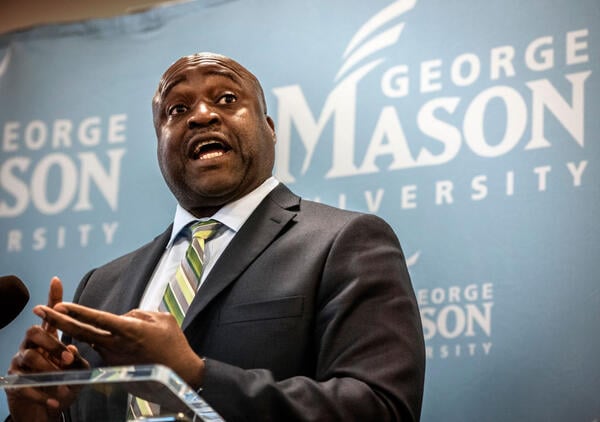In today’s rapidly evolving educational landscape, artificial intelligence (AI) has transformed from a distant technological concept to an everyday tool accessible to our students. In recent years, AI has proven to be a disruptor in the delivery of education, raising concerns among educators. Rather than viewing AI as a threat to academic integrity or a shortcut that undermines learning, educators have an opportunity to reframe AI as a collaborative partner in the educational process (Bowen and Watson, 2024). This article examines practical approaches for teaching students to collaborate with AI tools in a manner that enhances, rather than replaces, critical thinking and deep learning.
The Collaborative Mindset Shift
According to the Global AI Student Survey by the Digital Education Council, 86% of students already use AI in their studies (“Digital Education Council Global AI Student Survey 2024,” n.d.). However, with widespread apprehension about the effects of AI in education, a mindset shift may be beneficial in alleviating fears of the unknown. The first step in creating a collaborative AI classroom is to shift both the instructor’s and student’s mindsets. As Bowen and Watson (2024) note in their book, Teaching with AI, ‘AI is going to change our relationship with thinking. It is already challenging ideas about creativity and originality, and it will forever alter education, work, and even how we think about thinking.’ They further posit that students and educators can work with generative AI systems to improve learning processes, making them faster and more efficient. They propose that assessments should shift to focus on the process of creation rather than just the final product. For instance, students might be required to submit transcripts of their AI interactions as part of their assignments, making the learning journey more transparent and accessible.
This approach aligns with Atchley et al. (2024), who conclude that while the new AI technologies in education will initially make educators’ jobs challenging, AI should be viewed as a collaborative tool for teachers and students alike. Their review examines the adoption of AI in education from the perspective that the primary outcome of higher education is employment, that education is centered around the cognitive domains associated with learning, and that there is a risk associated with allowing technology to perform cognitive tasks. Keeping those factors in mind, they posit that ‘to maximize the benefits of collaborative learning (between fully human teams and between teams that include AI), pedagogical strategies must intentionally incorporate primary and secondary factors that encourage shared responsibility, interaction, and metacognitive skill development, enhancing student engagement and learning outcomes.’ Further, they argue that ‘as students enter a workplace, their ability to work on human/computer “teams” is a critical cognitive skillset.’
Practical Classroom Strategies
1. AI-Assisted Drafting and Revision
Instead of banning AI writing tools, consider assignments where students deliberately use AI to generate initial drafts, then critically analyze and substantially revise those drafts. This process teaches students to:
- Craft effective prompts (a transferable skill)
- Identify strengths and weaknesses in AI-generated content
- Apply their own expertise and voice to improve upon machine outputs
Students can submit both the original AI output and their revised version, along with a reflection on their editing process. In addition, asking students to support their edits with evidence-based references teaches them to critically analyze AI outputs. This transparency transforms potential academic dishonesty into a learning opportunity about the value of human expertise and judgment.
2. Comparative Analysis Activities
Design activities where students compare multiple AI-generated responses to the same prompt and then evaluate which is most effective and why. This approach:
- Develops critical evaluation skills
- Demonstrates AI limitations and inconsistencies
- Reinforces that AI requires human oversight
For example, students might prompt three different AI tools with the same question and then analyze differences in factual accuracy, reasoning approaches, and potential biases.
3. AI as Research Assistant
Teach students to use AI as a research brainstorming tool while maintaining scholarly rigor. Students can:
- Use AI to generate potential research questions
- Identify gaps in AI knowledge that require traditional research
- Cross-check AI-suggested sources with academic databases
This approach, similar to what Cianciolo and Regehr (2019) describe as “layered analysis,” helps students understand the complementary relationship between AI-assisted and traditional research methods.
Evidence of Impact
Early evidence suggests that collaborative AI approaches improve learning outcomes. In a study of healthcare education environments, students who learned to critically engage with AI tools, such as simulated gaming (SG), expressed more satisfaction with the training session than the traditional teaching group (TT). Additionally, students in the SG group found the activity more engaging and reported increased motivation (Blanie et al., 2020).
Similarly, in a recent meta-analysis examining the relationship between AI and students’ academic achievement, Dong et al. (2025) concluded that students who utilized AI-enhanced learning approaches demonstrated significantly higher academic performance, outpacing their counterparts in conventional educational settings. Moreover, the authors concluded that AI technologies may be particularly valuable for secondary and higher education students, who typically possess more developed critical thinking skills and can engage meaningfully with sophisticated AI systems that may apply across disciplines.
Implementation Considerations
When implementing collaborative AI approaches, consider these guidelines:
- Be explicit about when and how AI use is appropriate for specific assignments
- Create rubrics that evaluate students’ critical engagement with AI, not just the final products
- Model appropriate AI collaboration in your teaching practices
- Provide scaffolded opportunities for students to practice AI collaboration with feedback
Conclusion
By teaching students to work with, rather than against, AI tools, we prepare them for a future where human-AI collaboration will be commonplace across various professions. The collaborative AI classroom doesn’t diminish the value of human thinking, instead, it elevates it by helping students understand what uniquely human perspectives they bring to problems that AI alone cannot solve.
Rather than focusing solely on outcomes (what students produce), this approach emphasizes the learning process itself, aligning with calls from Allen et al. (2021) for more comprehensive evaluation approaches in education that go beyond simple outcome measures. By teaching students to be thoughtful collaborators with AI, we help them develop the critical thinking skills and technological literacy they’ll need throughout their careers.
Ewa Posorski is an educational leader and advocate for integrating artificial intelligence into modern pedagogy. With a focus on fostering collaboration between students and AI tools, Ewa champions a shift in mindset that embraces AI as a partner in learning rather than a threat to academic integrity. Her work emphasizes practical strategies for AI-assisted drafting, comparative analysis, and research support, all aimed at enhancing critical thinking and metacognitive skills. Drawing on current research and classroom evidence, she promotes transparent, process-oriented learning that prepares students for a future of human-AI collaboration across disciplines.
References
Allen, L. M., Hay, M., & Palermo, C. (2021). Evaluation in health professions education—Is measuring outcomes enough? Medical Education, 56(1), 127-136. https://doi.org/10.1111/medu.14654
Atchley, P., Pannell, H., Wofford, K., Hacker, D. J., & Risko, E. F. (2024). Human and AI collaboration in the higher education environment: opportunities and concerns. Cognitive Research: Principles and Implications, 9, 20. https://doi.org/10.1186/s41235-024-00547-9
Blanié, A., Amorim, M. A., & Benhamou, D. (2020). Comparative value of simulation by gaming and a traditional teaching method to improve clinical reasoning skills necessary to detect patient deterioration: A randomized study in nursing students. BMC Medical Education, 20, 53. https://doi.org/10.1186/s12909-020-1939-6
Bowen, J.A. & Watson, C.E. (2024). Teaching with AI: A practical guide to a new era of human learning. Johns Hopkins University Press.
Cianciolo, A. T., & Regehr, G. (2019). Learning Theory and Educational Intervention: Producing Meaningful Evidence of Impact Through Layered Analysis. Academic Medicine: Journal of the Association of American Medical Colleges, 94(6), 789–794. https://doi.org/10.1097/ACM.0000000000002591
Bowen, José Antonio, and C. Edward Watson. 2024. Teaching with AI: A Practical Guide to a New Era of Human Learning. Baltimore, Maryland: Johns Hopkins University Press.
Digital Education Council. “Digital Education Council Global AI Student Survey 2024.” n.d. Accessed March 24, 2025. https://www.digitaleducationcouncil.com/post/digital-education-council-global-ai-student-survey-2024.
Liu, D., Tang, X., & Wang, X. (2025). Examining the effect of artificial intelligence in relation to students’ academic achievement: A meta-analysis. Computers and Education: Artificial Intelligence. https://www.sciencedirect.com/science/article/pii/S2666920X25000402







